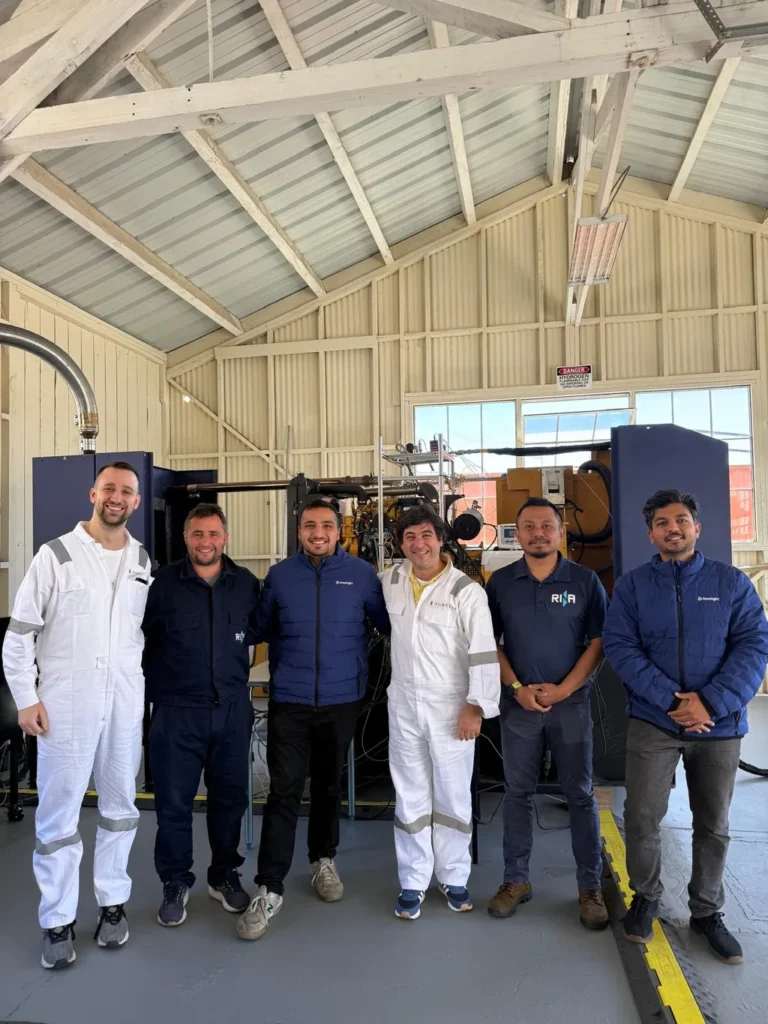In an industry where every drop of fuel matters and regulations are tightening by the minute, California-based Newlight Marine Technologies, Inc. has just hit a significant milestone. On 25 October 2025, their plug-and-play Hybrid Diesel-Hydrogen Injection System sailed through Factory Acceptance Testing (FAT) under the watchful eye of marine-certified heavyweight RINA.
RINA’s FAT protocol, conducted at its engine lab in Italy, is notoriously rigorous. Since 1861, RINA has expanded across more than 500 offices worldwide, handling everything from classification to risk assessment. Their testing involves subjecting engines to extreme conditions—sweltering heat, bone-chilling cold, relentless vibrations, and merciless load swings—to ensure that equipment won’t fail mid-ocean. At their Genoa facility, 5 MW dynamometers and environmental chambers mimic a range of conditions, from Caribbean afternoons to Arctic blizzards. Real-time data capture ensures that Newlight’s module performs under pressure, both literally and figuratively.
FAT also delves deep into the backend, scrutinizing material trace logs, welding paperwork, and quality control diaries. Clearing this testing means shipowners can retrofit without an extra dry dock stop, reducing uncertainty and meeting both EU directives and IMO targets in one fell swoop.
Italy, with its 7,600 km of rugged coastline and shipyards blending centuries-old maritime lore with cutting-edge engineering, provides the perfect proving ground for Newlight’s retrofit. With RINA at the helm, FAT in Italy isn’t just a checkbox—it’s a global green light, ensuring retrofit kits gain instant acceptance across key shipping markets.
The technology behind Newlight’s system is both innovative and practical. The retrofit slices into the marine engine’s fuel rail and introduces hydrogen alongside diesel. Key components include a precision hydrogen injection module with ±2 bar pressure control, an engine control interface that manages dual-fuel timing over CAN bus or Modbus, and marine-grade alloys and PTFE-based seals that resist corrosion and hydrogen embrittlement. The brain of the operation is a redundant PLC network meeting SIL 2 safety standards, ensuring that a single sensor malfunction won’t compromise the ship.
Performance gains are backed by solid data. RINA’s FAT review showed up to a 30% drop in specific fuel oil consumption and up to a 60% slash in CO₂ emissions. Early sea trials also hint at lower NOₓ emissions, thanks to hydrogen’s fast flame speed. Full trial results will be available once the technology goes commercial.
Unlike LNG conversions that bench vessels for weeks, Newlight’s retrofit installs in a typical 3–5 day maintenance window. Its compact footprint usually fits into existing engine rooms without a full-scale rehash. Handy software tweaks allow for over-the-air patches and remote analytics, enabling operators to monitor fuel burn and emissions in real time without needing extra crew.
With IMO’s 2030 and 2050 emission targets looming, carbon levies and port surcharges are becoming the new normal. Newlight’s retrofit helps vessels slash operating costs through fuel savings, unlock green financing and sustainability-linked loans, and boost Carbon Intensity Indicator (CII) scores under EU MRV rules. Insurers are even eyeing premium discounts for retrofitted ships, potentially trimming hull and machinery cover fees.
Retrofitting existing engines offers a faster route to reducing greenhouse gases while the industry ramps up pure hydrogen infrastructure. Alternative fuels like methanol, ammonia, and LNG each come with their own set of challenges, such as cryogenic tanks, toxicity safeguards, or complex bunkering. A hydrogen-diesel blend sidesteps these hurdles by fitting into today’s fuel networks with minimal fuss.
Newlight Marine Technologies, founded in 2023 in California, is led by co-founders Shaul Levi (CEO) and Haran Cohen Hillel. With backgrounds in aerospace H₂ storage and analytics platforms for power generation, they are well-positioned to drive rapid prototyping and marine-grade design. Plugged into the F6S network, Newlight closed a seed round last year and is now in talks with major shipowners and engine OEMs for pilot installs slated for early 2026.
Their modular manufacturing line in California churns out retrofit kits in batches, driving costs down through scale. Next up is a second facility near a major port to fast-track global shipments and meet the rising demand for sustainable energy solutions.
If retrofits like this catch fire, we could see new investments in hydrogen infrastructure, from port bunkering stations to production hubs. Emerging marketplaces for engine performance analytics and real-time emissions tracking could also emerge, giving brokers and charterers instant access to green metrics on the

